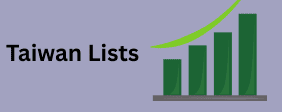expand their reach in the world’s fourth most populous country. With over 270 million people and a rapidly growing digital economy, Indonesia offers immense opportunities for businesses to connect directly with consumers via mobile communication. A comprehensive and well-organized Indonesia phone number list enables targeted marketing campaigns, timely customer engagement, and enhanced service delivery, making it a powerful tool for growth in this diverse and dynamic market.
1. The Mobile Landscape in Indonesia
Indonesia phone number list is invaluable due to the country’s exceptional mobile penetration and digital adoption rates. Indonesia has one of the fastest-growing mobile markets globally. With over 350 million mobile subscriptions, exceeding its population due to multiple SIM ownership. Smartphones are the primary device for internet access for most Indonesians, driving mobile-first communication habits. As such, businesses leveraging phone number lists can tap into this mobile-centric culture to deliver personalized, immediate messages that resonate with consumers across urban and rural regions.
2. Industry Applications of Indonesia Phone Number Lists
Various industries in Indonesia utilize phone number lists for communication and marketing purposes. Retailers use SMS to promote flash sales, product launches, and loyalty programs. Financial institutions send transaction alerts, loan reminders, and credit offers to customers. Healthcare providers notify patients about appointments and health campaigns. Education providers use mobile messaging for student notifications and updates. Additionally, the government and public services rely on phone communication to disseminate information on social programs, emergency alerts, and policy changes, making phone number lists vital for effective outreach.
3. Legal and Regulatory Compliance in Indonesia
Operating with an Indonesia phone number list requires strict compliance with local laws and regulations. The Indonesian Ministry of Communication and Informatics regulates electronic communications, including the use of phone numbers for marketing. Companies must indonesia phone number list adhere to rules concerning consent, message content, frequency, and opt-out mechanisms to protect consumer privacy and prevent spam. Ensuring compliance not only mitigates legal risks but also builds trust with Indonesian consumers, who are increasingly aware of data privacy issues and demand transparency from businesses.
4. Best Practices for Building a Quality Indonesia Phone Number List
Creating an effective Indonesia phone number list begins with ethical data collection and clear consent protocols. Organizations can gather phone numbers through website registrations, mobile apps, retail promotions, and events, offering incentives like discounts or exclusive india phone number list for strategic communication and Business Growth content to encourage participation. Regularly validating and cleansing the list to eliminate inactive, duplicate, or incorrect numbers is essential for maintaining list quality. Segmenting contacts based on demographics, location, interests, and purchasing behavior enhances targeting accuracy and campaign relevance.
5. Leveraging Segmentation and Personalization
Segmentation is key to maximizing the potential of an Indonesia phone number list. Indonesia’s cultural and linguistic diversity means that personalized messaging tailored by region, language, and consumer preferences can significantly boost engagement. For instance, targeting SMS cuba business directory campaigns in Bahasa Indonesia, Javanese, or Sundanese based on user data can increase message relevance. Segmenting by purchasing habits or customer lifecycle stage allows businesses to send timely promotions or service reminders that drive conversions and foster loyalty.
6. Integrating Mobile Communication with Multichannel Marketing
To optimize outreach, integrating Indonesia phone number lists with other marketing channels provides a unified customer experience. SMS and voice messages can complement email marketing, social media, and app notifications, creating a consistent brand presence. For example, a retail promotion announced via SMS can be reinforced with targeted Facebook ads and followed up by app-based push notifications. This omnichannel approach ensures that marketing messages reach consumers through their preferred platforms, increasing recall and engagement rates.
7. The Role of Automation in Managing Phone Number Lists
Automation plays a crucial role in managing Indonesia phone number lists efficiently. Automated SMS platforms, customer relationship management (CRM) systems, and marketing automation tools enable businesses to schedule messages, trigger notifications based on customer behavior, and personalize communication at scale. These technologies provide real-time analytics, helping marketers measure campaign effectiveness and make data-driven adjustments.
8. Overcoming Challenges in Mobile Marketing
Using an Indonesia phone number list comes with challenges such as maintaining data accuracy, ensuring regulatory compliance, and avoiding message fatigue among recipients. Over-messaging or sending irrelevant content can lead to opt-outs and damage brand reputation. It is also important to respect language preferences and cultural nuances to avoid misunderstandings. Maintaining high data hygiene, honoring opt-out requests promptly, and crafting meaningful, personalized messages are essential best practices to navigate these challenges successfully.
9. Future Trends in Mobile Communication in Indonesia
Looking ahead, the use of Indonesia phone number lists will evolve with emerging technologies and shifting consumer behaviors. The adoption of Rich Communication Services (RCS), AI-powered chatbots, and hyper-personalized messaging will transform mobile communication into a more interactive and engaging experience. Integration with mobile wallets and location-based services will open new avenues for real-time offers and customer support. Businesses investing in data quality, automation

